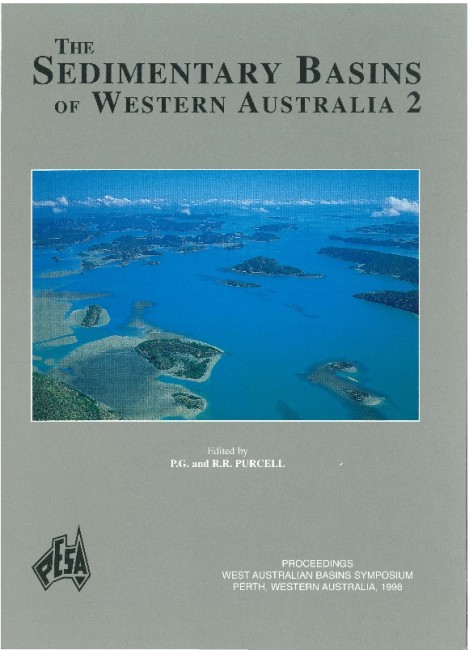Publication Name: The Sedimentary Basins of WA
Authors: S. N. Apak and J. Backhouse
Publication Volume: 2
Date Published: December 1998
Number of Pages: 23
Reference Type: Book Section
Abstract:
The Grant Group of the Canning Basin is redefined and restricted to the interval previously referred to as the Upper Grant. The Grant Group on the Barbwire Terrace has been previously subdivided into the Hoya, Calytrix and Clianthus formations and these units are sustained. In the Fitzroy Trough and in the areas around the Gregory Sub-basin these formations cannot be distinguished. The thick siliciclastic succession below this Upper Grant Group, previously designated 'Lower Grant Group', is assigned to a new stratigraphic unit, the Reeves Formation. Palynostratigraphically, the Grant Group is entirely confined to the Pseudoreticulatispora confluens Zone of Asselian to Tastubian (Early Permian) age. The Reeves Formation includes palynofloras from the Grandispora maculosa Assemblage, through the Spelaeotriletes ybertii and Diatomonozonotriletes birkheadensis Assemblages to palynofloras assigned here to the Deusilites tenuistriatus Assemblage; an age range of late Visean to approximately Stephanian (Early to Late Carboniferous).A regional erosional surface, formed during the Meda Transpression, displays large valleys, faultcontrolled
lows and channels at the base of the succession. The surface was progressively covered by a sequence of fluvial to marine sediments with extensive glacial deposits in some parts. The presence of thin Reeves Formation on the Barbwire Terrace, and an unconformable contact between the Reeves Formation and the Grant Group on the Crossland Platform and Betty Terrace, suggest minor uplift and erosion on the high areas following deposition of the Reeves Formation. In most wells the Reeves Formation consists of thick stacked sandstone sequences and represents a period of fluvial deposition and coeval erosion of older Carboniferous units. Glacial cycles and differential subsidence caused onlapping and offlapping along the Barbwire Terrace, particularly in the Grant Group. Although multiple phases of glaciation complicate the facies relationships, four parasequences and systems tracts are recognized in the Grant Group. The structural and sedimentologic setting of the parasequences provides potential plays associated with faulting, unconformities, base level changes and lateral facies variations.


